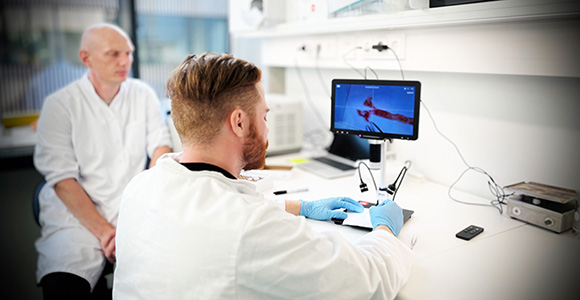
New Discovery Shows that a Notorious Villain Protects Our Blood Vessels
A protein that has been regarded as harmful for decades turns out to play a crucial role in maintaining our blood vessels and protecting against cardiovascular diseases.
New research from the University of Southern Denmark (SDU) shows that our blood vessels contain large amounts of the protein CCN2. Removing this protein has severe consequences for the blood vessels, including an increased risk of atherosclerosis, which can lead to heart attacks or strokes.
This finding contradicts the existing perception of the protein as contributing to the development and worsening of other serious diseases.
-The CCN2 protein has long been known as a ‘villain’ in fibrotic diseases and cancer. However, our research shows that it is present in high amounts in healthy blood vessels and is essential for the muscle cells in the blood vessels to maintain their function, explains Lasse Bach Steffensen, Associate Professor at the Department of Molecular Medicine.

New Understanding of the Protein's Role
To investigate the significance of CCN2, the researchers conducted experiments on mice and observed how the absence of the protein led to severely deformed blood vessels. They found that the protein is essential for keeping the cells in blood vessels healthy and functioning properly.
-Without sufficient CCN2, the blood vessels can become deformed and prone to developing atherosclerosis, explains Postdoc Jannik Hjortshøj Larsen, the first author of the article.
Implications for Future Treatments
The results suggest that treatments designed to remove or inhibit CCN2 may have unintended side effects. Such treatments are currently being developed by several pharmaceutical companies.
Meet the Researcher
Lasse Bach Steffensen is an Associate Professor in the Cardiovascular & Renal Research unit, Department of Molecular Medicine.
Meet the Researcher
Jannik Hjortshøj Larsen is a Postdoctoral Researcher in the Cardiovascular & Renal Research unit, Department of Molecular Medicine.
Fibrotic Diseases
However, Lasse Bach Steffensen points out that for patients with acute, life-threatening cancers, the hope of survival naturally outweighs the potential risk to the blood vessels.
-In the context of treating milder and more chronic diseases, considering our results, it is important to monitor how the treatment affects the cardiovascular system.
Potential Use in Developing Future Cardiovascular Treatments
Research results from the laboratories at the Department of Molecular Medicine also suggest that CCN2 could play a role in stabilising atherosclerosis in blood vessels, thereby reducing the risk of blood clots.
-If this is correct, this knowledge could be used to prevent heart attacks or strokes in the future, suggests Lasse Bach Steffensen.
The next step for the researchers is to investigate whether it is possible to develop treatments that enhance the positive effect of the protein locally in the blood vessels.
About the Study
The research is the result of close collaboration between Odense University Hospital (OUH) and the Department of Molecular Medicine (IMM) at SDU.
The study is based on patient samples from the Odense Artery Biobank, where samples have been systematically collected over several years. The biobank supports various research groups at both OUH and SDU and promotes "translational research," ensuring that the research is patient-focused and addresses clinically relevant questions.
The scientific article presenting the study is published in Cardiovascular Research and can be read here.
The first author of the study is Jannik Hjortshøj Larsen, a postdoc at the Department of Molecular Medicine, and Lasse Bach Steffensen is the senior author.